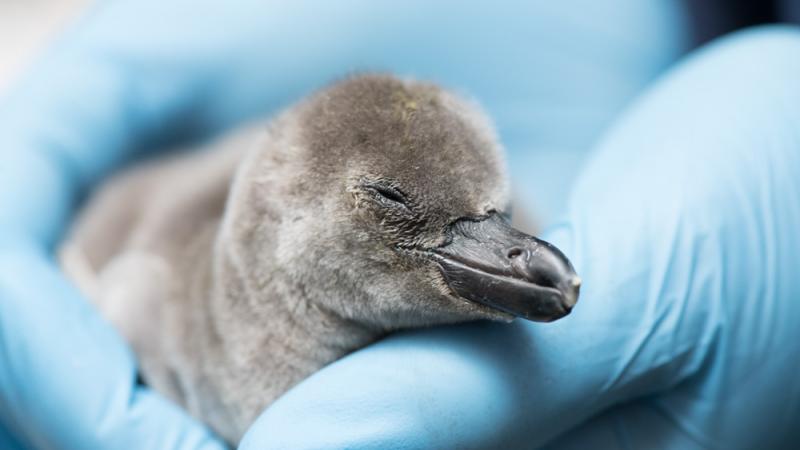Humboldt beginnings: Season's first penguin chick hatches

Visitors can look for new penguin chick this summer in the zoo's penguinarium
After spending a couple of peep-filled days emerging from its shell — and causing quite a stir on social media — a new chick joined the Oregon Zoo's Humboldt penguin colony this morning.
"The first hatching went really well," said Gwen Harris, the zoo's senior keeper of birds. "The chick appears to be healthy and active, and its parents — Linus and Luna — are caring for it well."
The young penguin, whose gender won't be known for a few weeks, began hatching on Tuesday and emerged early this morning. Humboldt penguins typically hatch 40 days after eggs are laid, and it takes around three days for the chicks to fully emerge from the shell, according to Harris.
Oregon Zoo Instagram followers got a live look at the chick still inside its egg on yesterday morning, and subsequent videos on Facebook and Twitter added to the excitement.
The new arrival — which looks like a "fluffy gray plush toy" and can fit in the palm of your hand — is the 189th Humboldt chick to hatch at the zoo since it began breeding the threatened species in the 1980s.
It will be nearly as tall as its parents by the summer, but easy to tell apart by its plumage: Young Humboldts are grayish-brown all over and don't develop their distinctive black-and-white tuxedo markings for a couple years.
Harris said two other penguin pairs are currently sitting on fertile eggs, and she has hopes for more chicks before the breeding season is over. Visitors can look for the new arrivals in the summer, once they fledge and begin to explore the rugged terrain of the zoo's penguinarium, which simulates the endangered birds' native habitat along the rocky coast of Chile and Peru. Until then, Harris says, the young ones will be keeping cozy inside their nest boxes, growing strong on a diet of regurgitated "fish smoothie" provided by their parents.
Once they fledge, at around 3 months old, young penguins can swim right away — no lessons needed — and visitors should have good views of these sleek sea birds darting through the clear waters of the zoo's penguinarium. In 2012, the zoo completed a much-needed upgrade of the penguinarium's water-filtration system, one of many improvements funded by the community-supported 2008 zoo bond measure aimed at protecting animal health and safety while conserving and recycling water. The upgrade saves millions of gallons each year.
Humboldt penguins, which live along the South American coastline off of Peru and Chile, are classified as "vulnerable" by the International Union for Conservation of Nature, and in 2010 were granted protection under the U.S. Endangered Species Act. Of the world's 17 penguin species, Humboldts are among the most at risk, threatened by overfishing of their prey species, entanglement in fishing nets, and breeding disruption due to commercial removal of the guano deposits where the penguins lay their eggs. Their population is estimated at 12,000 breeding pairs.
Through its Future for Wildlife program, the Oregon Zoo has supported Peru-based conservation organization ACOREMA's work to protect the vulnerable Humboldt penguin. ACOREMA monitors penguin mortality and works closely with San Andrés fishermen to mitigate the practice of hunting penguins for food. The group also trains volunteer rangers, reaching out to 3,000 students, teachers and Pisco-area residents a year to raise awareness about penguin conservation.
More News

Rescued cougar cubs are venturing out
A pair of orphaned cougar cubs, rescued and brought to the zoo by Washington Department of Fish and Wildlife staff in November, have begun exploring their outdoor habitat.April 17, 2025

Zoo seeks pika watchers for summer season
The Oregon Zoo is recruiting volunteers for Cascades Pika Watch.April 15, 2025

Zoo convenes action for imperiled elephants
Sabah government representatives joined conservation NGOs, local communities, palm oil producers, and tourism operators this week in the fight to save the world’s smallest elephants from extinction.April 11, 2025

